The French Public Higher Schools of Art
Clermont-Ferrand
Ecole supérieure d’art de Clermont Métropole
about
Favouring a non-specialized approach to training in the visual arts within its art department, the École Supérieure d’Art de Clermont Métropole (ESACM) (Clermont Ferrand School of Fine Arts) provides demanding and open education (drawing, painting, printing, sculpture, installations, photography, video, cinema, digital practices, contemporary art, art history, philosophy, literature etc.), enabling all students to develop, nourish and broaden a personalized method which is committed to contemporary design.
The school is certified by the French Ministry for Culture and Communication, which enables it to award two state-certified art degrees: the “National Diploma in Art” (Diplôme National d’Art – DNA) which is equivalent to a bachelor’s degree, and the “National Diploma in Plastic Arts” (Diplôme National Supérieur d’Expression Plastique – DNSEP) which is equivalent to a master’s degree, and which are awarded after 3 and 5 years respectively. While the school’s aim is to train artists, it also provides training for various occupations involving art and culture, and enables everyone to follow their own professional path. The master’s degree enables students to continue on to other master’s degrees, which include professional ones, to doctoral level art school degrees and university doctorates.
The ESACM has also set up two research areas: “Landscape Spaces” (les espaces des paysages) and “Workplace Worlds” (les mondes du travail). These two areas generate research programmes which, through invitations, conferences, seminars, travel, workshops, publications, shows and exhibitions etc., implement art research through art. Every year, Master’s students join research teams. These are assisted by the Research Cooperative, which brings together experienced resident researchers and student researchers. The doctorate enables student researchers to continue their research work over 3 years.
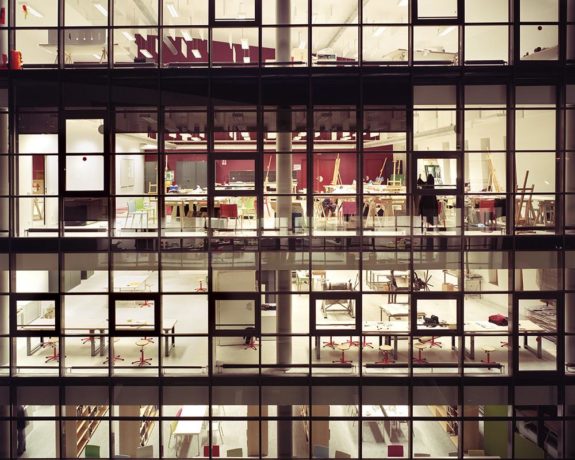
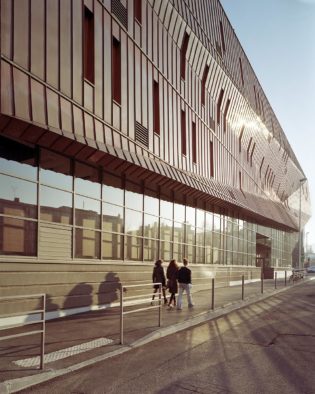
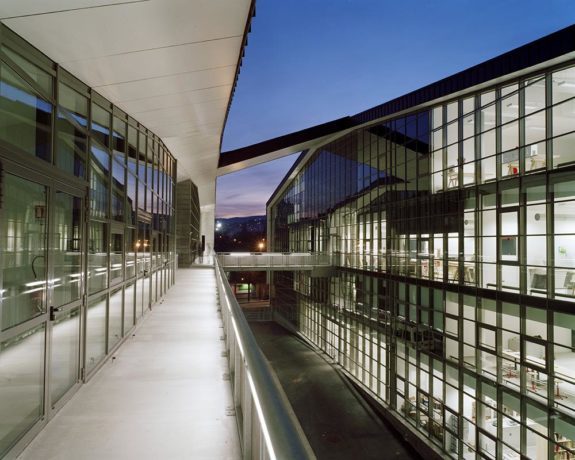

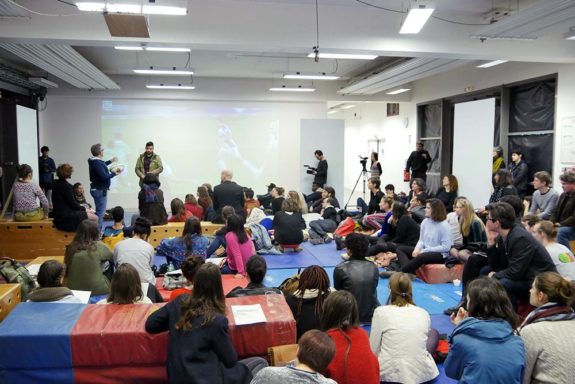

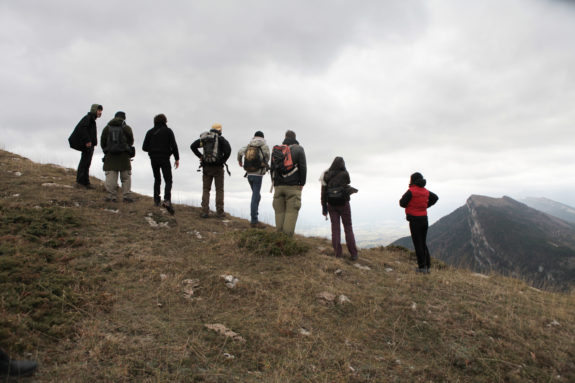

École Supérieure d’Art de Clermont Métropole. Photo : Jürgen Nefzger
École Supérieure d’Art de Clermont Métropole.
École Supérieure d’Art de Clermont Métropole. Photo : Jürgen Nefzger
Journée d'étude "Un film infini (le travail)", 2017
"Fin de partie", exposition des diplômés 2016
"Collages en France", photo Vincent Blesbois
"Départs", exposition des diplômés 2015
options
Art
qualifications
DNSEP option Art
third cycle
School Cooperative / 3rd cycle
The Research Cooperative is the platform from which the ESACM’s research activities are organised. Every year it welcomes resident researchers selected by invitation to apply, who are looking to explore or deepen an aspect of their own research. It also hosts the 3rd cycle for student researchers, who are also selected by invitation to apply. By promoting exchanges between invited researchers, teachers and students, the Cooperative plays a part in nourishing the ESACM’s research areas and programmes, in close collaboration with research teams.
preparatory schools
Preparatory lessons and training
To prepare for entrance exams for the Écoles Supérieures d’Art and for compiling their own project dossier, the ESACM invites pupils to attend preparatory lessons during the school year (Saturday afternoons from October to May) or intensive training (2 dates announced in the spring).
Information and registration form available at www.esacm.fr
research programmes
Research programs
Researchers can either join existing programs and projects in the Coopérative de recherche, or initiate new areas of research. A research program is a group made up of teachers, researchers and students, gathered around a common theme or field. Appropriating critical methodologies sourced from sciences, humanities, cinema, literature, and artistic practice, we make consistent attempts to question our references and reshape our forms of knowledge. By exploring various milieus such as the Mediterranean and Central Europe, Sub-Saharan Africa, or the American Midwest, the research, carried out through the programs of the Coopérative de recherche, address matters of migration and exile, identities labelling, cultural interaction, and economic or political means of resistance.
Ongoing programs in 2020-2021 :
– “Leviathan”
Created in 2016 by Cédric Loire, art historian and teacher at ÉSACM, and Sarah Ritter, artist, the “Leviathan” group also includes the artists Antoine Barrot, Kostia Jopeck and Charlie Jeffery, and has involved MA students between 2016 to 2018.
The research is based on shared readings of Herman Melville’s novel, Moby-Dick, or the Whale (1851), related to contemporary milieus — mainly the city of Detroit, which the group has visited several times. Leviathan deals with violence and capitalism, with the forms of resistance that oppose them, and with the possibilities of narrating the world we live in. Study days and seminars will be held in the coming year (2020-2021) while work continues of the finalisation of an editorial project drawing together the research of the last few years.
– “Des Exils”
The research group is led by Michèle Martel, art historian and Jan Kopp, artist, both teachers at ÉSACM, the artists and researchers Fabrice Gallis, Mélis Tezkan, Kostia Jopeck, Jérôme de Vienne, and master students. It has its origins in a seminar organized in 2017 about what forced or voluntary displacements do to forms.
The working group creates situations of exchange based on collective readings, interviews with interlocutors from the art world, by organizing readings and performances in the school and by repeating gestures and actions produced by others.
– “Figures de transition”
Based on the renewed interest in contemporary African art, from Clermont-Ferrand and in connection with Cotonou and Ouagadougou, “Figures of Transition” questions exhibitions and historical reverberations that shape the way we look at art and its figures. Working in Clermont-Ferrand and linked to art protagonists in Cotonou and Ougadougou, this research group is led by the artist Jacques Malgorn, critique and ÉSACM’s philosophy professor J. Emil Sennewald, artists Camille Varenne and Enrico Floriddia. It has been created in close cooperation with film curator and independent critique Clémentine Dramani Issifou and scenographer Dao Sada and develops its projects through frequent invitations of afro-european art-activists. This group is the outcome of a three-day long symposium, which took place in the ÉSACM under the title “surexpositions” in 2018. Today, the main activity of “Figures de transition” is the edition of the sequential publication “Epokä”. We are open to welcome new researches willing to widen, to shift, to question our intentions and objectives.
Past research programs :
“Collages en France” (2012-2013) ; “Robinson/Vendredi – Exploring Robinson” (2013-2017) ; “Le parti pris de l’expérience ; Marfa” (2012-2014) ; “L’intercalaire” (2014-2016) ; “Un film infini (le travail)” (2014 – 2020).
publications
Publications and DVDs giving account of research (films, seminars and study days, restitution of research projects, etc.) and exhibitions (graduates from the ESCAM, exhibitions in the Grand Atelier, etc.).
activities and events
Exhibitions, seminars and study days, conferences, study trips.
post-curricular or extracurricular activities
Adult classes.
Public projections and conferences (artists, philosophers, art historians, etc.).
international cooperation
The ESCAM is part of the ERASMUS Charter and partner to a number of higher education establishments in Belgium (Brussels), the Czech Republic (Ostrava), England (Oxford), Italy (Brescia), Germany (Regensburg), Greece (Salonica), Poland (Katowice), Portugal (Porto), Scotland (Aberdeen), Slovenia (Ljubljana), Spain (Biblao, Madrid) and Turkey (Istanbul, Isparta). It is also partner to higher education establishments in Canada (Montreal), USA (Norman) and Peru (Lima).
In the context of linguistic training, the school prepares students for a Degree in Language skills (DCL). Indexed on the grid of the Common European Reference Framework for languages, it displays a level of mastery of the english language. The idea is to favor student mobility, already strongly encouraged by conventions with foreign establishments, and to allow for a better integration into professional life.
Projects of an international dimension are also done in the context of pedagogy and research in the ESACM (research programmes at Marfa – USA – and in Benin, Landscape ARC in Benin and Istanbul, etc.).
gallery
The Grand Atelier – school gallery
specific equipment
Students work in group workshops which promote discussion and ongoing work in the school. They also have access to areas for experimenting with spatial installation of their research and work, and workshops associated with specific techniques and tools, including a photographic laboratory, print room, sculpture workshop, carpentry, printed art workshops, video and sound studios.
The school also has a Fablab – manufacturing laboratory – for developing practices and artistic projects, open to students from the school and to the general public. The ProtoLab is a place for sharing, discussing and experimenting, and has a 3D printer, a laser cutter and engraver, a Kinect, a cutting plotter, an embroidery machine, electronic and robotic equipment etc.
The school provides students with the main tools and consumables required for inductions and work carried out in the main artistic disciplines, so they can borrow cameras, use photographic apparatus and premises, recorders etc. to achieve their projects.
networks
ANdEA, Campus Art, ELIA.
Territorial activity:
The ESCAM has signed framework agreements with the National Higher School of Architecture, The Regional Funds of Contemporary Art, The Center for Virtual Reality and the Auvergne University.
It has strong ties with cultural actors such as the Court Métrage festival, the Creux de l’Enfer Center for Art, that of Meymac and la Tôlerie, the Roger-Quilliot Art Museum and the Extenso association, the Lilas Association and its “Unit 9” artist residency.
administrative team
Emmanuel Hermange Directeur
Frédérique Rutyna Secrétaire générale
Aurélie Brühl Responsable générale des études et relations internationales
Philippe Eydieu Responsable des projets extérieurs et des expositions, co-coordinateur de la recherche
Orlane Mastellone-Ruellan Chargée de communication
Brigitte Belin Bibliothèque
Claude Auberger Secrétariat pédagogique
professors
Régine Cirotteau
Roland Cognet
Nelly Girardeau
Rémy Héritier
Lina Jabbour
Armand Jalut
Jan Kopp
Sophie Lapalu
Serge Lhermitte
Cédric Loire
Émilie Brout & Maxime Marion
Michèle Martel
Cécile Monteiro-Braz
Gyan Panchal
Anthony Poiraudeau
Alex Pou
Marion Robin
J. Emil Sennewald
contact
25 rue Kessler
63000 | Clermont-Ferrand
tél. +33 (0)4 73 17 36 10
fax +33 (0)4 73 17 36 11
esa@esacm.fr
www.esacm.fr
students
170 students